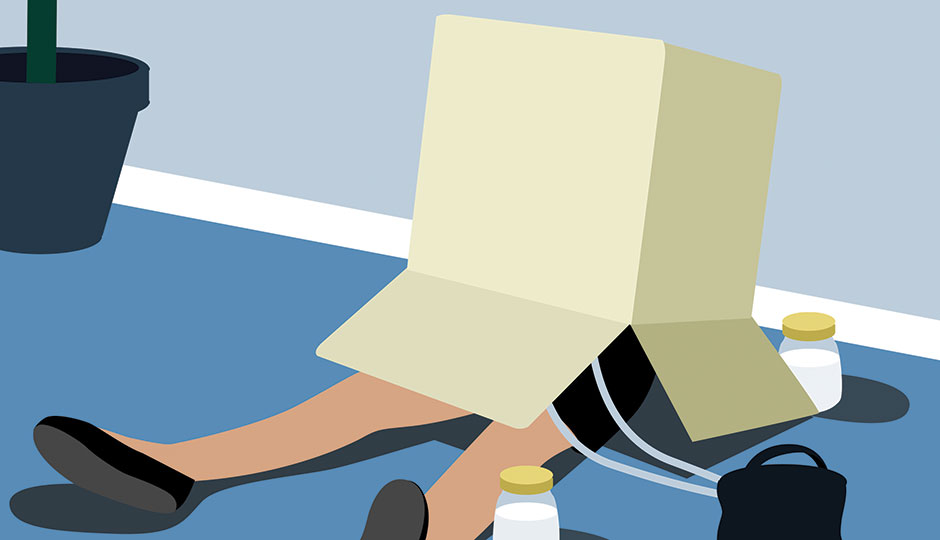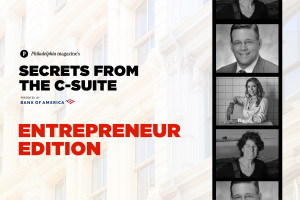How Philly Moms Are Fighting for the Right to Pump Breast Milk in Privacy

Illustration by Anna Parini
Like most moms, I’ve breast-pumped while perched delicately atop toilets, while wedged into filing closets, while idling in Target parking lots.
This is all de rigueur in the pumping world, which is one of endless workarounds. For one thing, being topless at work and milked by a motorized pump is nobody’s first choice; for working moms, pumping is the only way to feed their kids breast milk for the full year recommended by the American Academy of Pediatrics. Secondly, even though federal and city laws require most employers to provide non-bathroom private space for moms to express milk, there’s wide latitude in what those spaces look like and how consistently they’re available — particularly in our increasingly open-office society. Not to mention all the public spaces that offer, like, zip. So … hello, Wawa bathrooms, hotel lobbies, broom closets.
Consider my friend Samantha, a Yale-educated psychologist who travels the region for work. Over the past nine months, she’s pumped in company showers, in glass-walled conference rooms, in the offices of CEOs she just met. She’s over it.
“Women everywhere are doing this. We don’t expect better; we don’t want to make a big deal about it,” she says. “But it is a big deal; it can make feeding your kid really hard.” Samantha has turned herself into a sort of one-woman crusade, heading “straight to the top” at each new office she visits to ask about pumping spaces. “The leadership of a company should be aware of the need,” she says. She’s also launched an Instagram campaign — #PhillyPumpsHere — to document the less-than-ideal places where women pump.
As it happens, the politics of pumping are having a bit of a moment, pushed along by an election that highlighted the increasing dissonance between America’s purported ideals (“Breast is best!”) and our utter lack of supportive policies for working moms. (Reminder: We’re the only industrialized nation without paid parental leave and one of the few without child-care help.) As one friend, a new dad, points out: “The Affordable Care Act put all these free pumps out into the world, but there’s nowhere to comfortably use the damn things!”
Of course, nowhere is hyperbolic: More and better pumping rooms may be the final frontier of the breast-feeding revolution, but efforts are on the (slow, subtle) rise. Last year, the airport added nursing suites; the Convention Center unveiled portable nursing pods. Katja Pigur, director of breastfeeding services at Philly’s Maternity Care Coalition, says her office regularly advises employers striving to be more accommodating. And then there’s Wharton. In September, after a yearlong push from the group Mothers @ Wharton, the school unveiled four (rather luxe) lactation suites, complete with comfy chairs, outlets, TVs, wi-fi, dimmable lights and sinks.
“I had an emotional moment when I went in there,” says Divinity Matovu, co-president of Mothers @ Wharton. “I’m not even nursing. But I remember how crappy it was using bathrooms, stressed, searching for plugs.” The rooms, she says, will increase productivity of students, staff and professors and help Wharton compete with other schools. “It was sort of common sense.”
It’s more than that, says Jennifer Breaux-Kutcher, an assistant professor at Drexel’s Dornsife School of Public Health, who in 2014 successfully lobbied for the creation of her own school’s nursing suite: “Accommodating nursing moms is part of the larger sphere of how we handle working parents.”
And while America’s dismal track record with working parents doesn’t provide much hope, accommodating more nursing moms with better pumping spaces doesn’t seem as difficult or distant a reality as, say, subsidized preschool. After all, it’s 2016. Breast pumps are free; none other than Donald Trump’s alma mater installed lactation suites. Can pumping rooms at Wawa be that far behind?
Published as “A Pumping Room of One’s Own” in the December 2016 issue of Philadelphia magazine.


